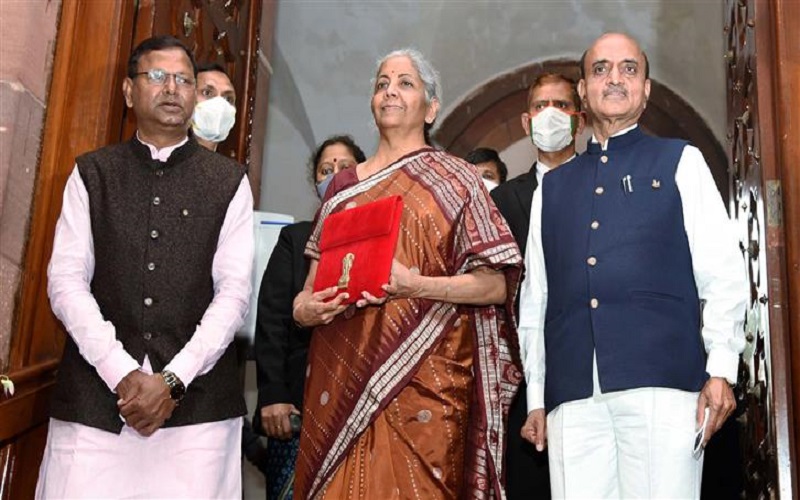A. Harikumar
The Prime Minister’s Gati Shakthi, which is a master plan announced by India’s Prime Minister Narendra Modi in August 2021, for developing holistic infrastructure has emerged as the focus area in India’s budget 2022-23 introduced by finance minister Nirmala Sitharaman in Parliament today (Feb 1) which plans to spend big on infrastructure to boost growth. Elucidating her approach, the minister said big public investment on modern infrastructure will be one of the drivers of growth, which will be guided by PM Gati Shakti. While listing out her priorities Mrs Sitharaman put PM Gati Shakti in the first place among the four priority schemes.
Along with enthusiastic references to infrastructure development her budget speech was peppered with the words inclusive development, Aatmanirbhar Bharat, multi-modal approach, innovative financing and futuristic technology which gave a hint about the impressions she wants to create about the budget document.
Terming PM Gati Shakti a transformative approach for sustainable economic development, Mrs Sitharaman said PM Gati Shakti master plan is driven by seven engines which are roads, railways, airports, ports, mass transport systems, waterways and logistics infrastructure all striving in unison to ensure rapid economic growth. The budget visualises an expenditure of $ 2.7 billion on roads development and $ 6.4 billion on affordable housing.
Road Development
Making some specific announcements, the finance minister said the master plan for roadways will be formulated in 2022-23, which will focus on faster movement of people and goods through India’s roads. The national highway network will be expanded by 25,000 kilometres in 2022-23, she said. A sum of Rs 20,000 crore will be mobilised through innovative financing options to supplement the public resources.
Touching on the National Investment Pipeline (NIP), the minister said the projects pertaining to NIP will be aligned with the PM Gati Shakti framework. The infrastructure to be created will be world-class, she added. Pointing out the achievements of the government on the infrastructure front Mrs Sitharaman said, the National Bank for Infrastructure Development and National Asset Recreation Company have commenced activities.
Commenting on data exchange between different sectors, Mrs Sitharaman said, data exchange will be brought on Unified Logistics Interface Platform. This will make logistics movement efficient, reduce costs and give real time information about movement of goods. In addition Open Source Mobility Stack for ensuring seamless travel of passengers will be facilitated.
The finance minister said contracts for setting up multimodal logistics parks in four locations across the country will be awarded in 2022-23.
As per the economic survey presented by the minister in parliament the other day the construction of national Highways in India jumped by 30.2% to 13,327 km in FY21 from 10,237 km in FY20. This will be improved further in FY 2022-23. According to different estimates, the total expenditure target for the National Highway Authority of India (NHAI) for the period extending from FY 2022-24 is nearly seven lakh crore and the government seems to have succeeded in implementing promises of huge capital expenditure on building infrastructure. This will go a long way in transforming India into a $ 5 trillion economy.
Railways
On the development plans for railways, the minister said the railways will develop new products and effective logistics services for small farmers and small and medium entrepreneurs. Under the Aatmanirbhar Bharat programme, 2000 km of existing rail network will be brought under Kavach indigenous technology for safety and capacity augmentation in 2022-23. As many as 400 new generation Vande Bharat express trains will be developed in the next three years.
According to Mrs Sitaraman 100 new PM Gati Shakti terminals will come up in the next three years in different parts of the country. In addition to the development of roads and railways a national rope way development programme will be implemented. Contracts for eight such projects will be awarded in 2022-23, she said.
The budget expects fiscal deficit for FY 2022-23 to be 6.4 percent of the gross domestic product (GDP). Though the budget 2021-22 had expected the deficit to be 6.8 percent of the GDP, the revised estimates have pegged it at 6.9 percent of the GDP, a slight increase.

